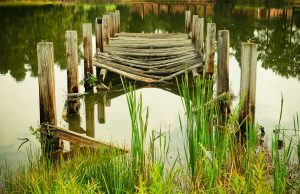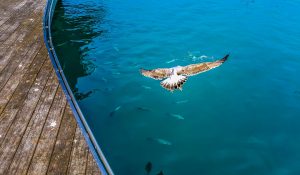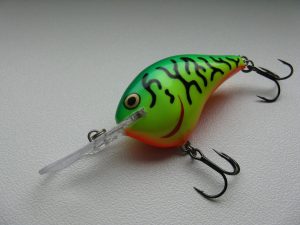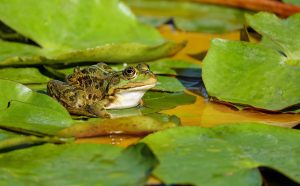We are in the middle of the summer vacation season, and many of us are traveling. I’m currently writing this during leg 1 of my flights from El Paso to Baltimore. Looking out the window I finally start seeing some actual water sources. I begin to think to myself “where could I find fish fast on that lake?” or in some cases that river. So if you are traveling, like me, pack your tackle box and rod and start finding fish in unfamiliar water.
Where to Find Fish Fast
Being in the military, I have had the pleasure to fish many different lakes and rivers. Fishing in new places can be fun, yet intimidating. On your home fishery, you know exactly where to go, at any time, and what baits to use. On an unfamiliar waterway, it can be like walking in someone else’s house with the lights off. So where does one start to find fish? The main three things to look for are structure, grass, and bait.
Structure

All fish want to feel secure, just like humans do. Looking for a structure is by far the easiest way to locate fish, especially largemouth and smallmouth bass. If you are fishing from shore look for docks, submerged logs, or even visible underwater boulders. In the summer months, the docks and submerged logs provide shade, security, and an ambush point. Cast out past these structures and work back to it to keep your bait in the strike zone. Don’t cast directly at the structure, you will most likely end up short or scare off any fish that is there.
Grass
The grass is always something I look for in a possible fishing spot. Submerged or matted vegetation such as hydrilla is a favorite for fish. When I’m standing on a dock I look for spaces between grass and possible ambush points. Think of the spaces between vegetation as highways, it’s a path of least resistance for fish. When targeting these highways, retrieve your bait right down the center. When looking for ambush points, I search for V shapes in the vegetation. I also like to work baits right along the edge of the vegetation line.

Bait
Lastly, I look for bait fish. Because I don’t own a boat, bait can be harder to find. Don’t just hope to target a feeding frenzy though. Finding baitfish or prey can tell you what color and types of baits and lures to use. If you do happen across some tiny shimmering fish leaping into the air, or groups of feeding birds, it is a safe bet to cast right into where you think that school is. Match the size and color of bait fish if possible, if not an average size swimming lure will do. Cast out to these schools and swim your baits back erratically, provoking a strike from a predatory fish if one is the cause of the frenzy.
How to Find Fish Fast
When I first arrive at a new waterway, I have a specific list of baits I use to quickly locate bites, which changes based off what I am fishing. A couple different things come into play here, but I’m just going to list some pretty general baits and lures you can use to locate the fish. My main lures are crankbaits, bladed jigs, soft plastics, and topwater baits.
I start off with crankbaits, especially around docks and the edges of vegetation, where water gets deeper fairly quick. I also like to use crankbaits in open water with rock or sand bottoms. Take a crankbait and start casting, and just reel it in at different speeds until you get a bite. I don’t really use deep divers, but you can switch to crankbaits that dive deeper to find the depth the fish are at. If you want to do this without spending the extra money, use heavier line and point your rod tip lower for a little extra depth. Currently, my favorite is a Strike King KVD 1.0.

Bladed jigs have become a new favorite for me. The wobble and flash of the blade make for great action and vibration to really get predatory fish going. I use a black and blue skirted, ½ oz jig with a silver blade, and I attach a matching color Yum! Crawpapi soft plastic as a trailer. Fish these around cover like logs, or swim them through the spaces between grass beds and twitch your rod slightly up as you reel and wait for the bite.
I swear by soft plastic baits. I like them weightless and weighted Texas rig style, and I love to use them when fast moving baits aren’t producing bites. Texas-rig a Gary Yamamoto Senko worm with a 1/8-1/4 oz bullet sinker and pitch it into pockets of vegetation, or into submerged trees and branches. Go heavier with the weight to punch worms or crawfish baits into the thick stuff.
Top Water Mayhem
I added topwater fishing to this list purely for situational purposes. In the right conditions, it is the most exciting style of fishing there is. Early mornings with no wind and clear water brings perfect topwater conditions, even more so if there are lily pads around. In open water or fishing over submerged grass, I use a Zara Heddon spook and do a walk-the-dog method. You can also fish these on the shallower parts of rock jetties. Watching fish explode out of the water to swallow this bait is the best way to get the heart rate up in the AM.

If lily pads or heavy matted vegetation shows its face, I love to use a frog. Throw a frog lure on top of the vegetation and start slowly reeling it back, let it swim in the water if possible between pads. Now don’t get overly excited when the fish explodes at your lure. If it misses reel faster and if it swallows it be patient to the set the hook. Reel in your slack and set it hard after a second or two. Make sure you are using a heavy braided line to really get the hook set, that way your line doesn’t break as you fight a lunker out of heavy vegetation.
When you take that summer trip this year, don’t forget that fishing pole and tackle box. Pack this list of tactics and hit some new water, and confidently throw some casts knowing you will catch fish. Worst comes to worst, I’m wrong and you still had an excuse to go fishing instead of antiquing with the lady friend. Or you can always just use the ol’ hook & worm and drink beer while you wait it out.












